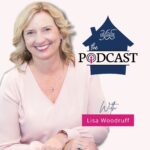
Anna, our lead researcher is back and we are talking about the American Household and looking at the data from the Census of the past. We came across this info graphic that is interactive. You can slide the dial to see stats based on where you have placed the pointer. We were entertained with the results we were seeing and we wanted to talk about what we found on the podcast. How much has the American household changed over time?
What continues to blow my mind is 2 things. These studies keep being conducted proving what we already know while no studies are being done to support a solution. There is only about ¼ of the population that is even being addressed because the focus for solutions and the conversation is for houses with married couples and children. Children are usually identified as being under the age of 18 and living at home. Our best guess says that this data is based on people 18-55 years old. I guess that’s one more thing that blows my mind, “adulthood” ends at 55. And “old age” starts at 65. So from 55-65 there is a dearth (using my big PhD words), as in not very much, of information for people 55-65. But as you will hear in the episode people are getting married and having babies later, so some 65 year olds could still have children under 18 at home.
So many numbers
So when we look at this information, the breakdown was in 1960 30% of the population was married without children and today about the same at 29.4% of the population. We talked about a lot of demographics, “other household” types. We looked at the 50 ‘s and 60’s vs. 2023. The biggest change we noticed was in the age men and women are getting married. Women in the 50’s were getting married at age 20 but today they are waiting till around age 28. And it’s the same for men. In the 50’s, men used to get married around age 24 but are now waiting till around 30. People are waiting longer to get married which means they are having children at a later age, if they are having children at all – DINKs. Anna reminded me of that acronym DINK, that stands for dual income-no kids. And we discussed possible reasons for this. Who is going to take care of these people as they age?
I’m going to be a doctor!
It recently dawned on me that people will call me doctor after I get this PhD. I didn’t realize how science-y it was going to be, but I will know the brain when all is said and done. I lost sight of that because my goal in all of this was to have a seat at the table and do research to come up with solutions. My studies will include people 18 – 85 year olds so that I can get the full picture of how our houses are operating and who is in them. I want to change the conversation to include all household types. Our housework will never be done but I do want to be able to offer solutions how to plan for success that anyone can apply. I’m turning academia on it’s head with everything from funding, maybe finding where planning is in the brain, to coming up with solutions to problems that have redundantly been proven.
EPISODE RESOURCES:
- 559 – What Do You Mean I May Settle 7 Estates?! – Organize 365 Team Unexpected Events – Virginia
- https://usafacts.org/articles/how-has-the-structure-of-american-households-changed-over-time/
- https://www.americansurveycenter.org/research/emerging-trends-and-enduring-patterns-in-american-family-life/
- https://www.pewresearch.org/social-trends/2023/09/14/the-modern-american-family/
- https://www.parents.com/parenting/dynamics/the-changing-face-of-the-american-family/
- https://www.nbcnews.com/health/parenting/how-modern-us-family-size-changing-charts-map-rcna65421
- Sign Up for the Organize 365® Newsletter
Did you enjoy this episode? Please leave a rating and review in your favorite podcast app. Share this episode with a friend and be sure to tag Organize 365® when you share on social media.



